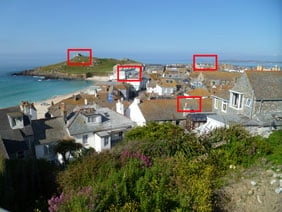Panasonic Lumix DMC-FS30 / FH20
-
-
Written by Gordon Laing
Quality
Panasonic Lumix DMC-FS30 / FH20 vs Fujifilm Finepix JZ300 real-life resolution
Panasonic Lumix DMC-FS30 / FH20 results: Real-life resolution / High ISO Noise
Panasonic Lumix DMC-FS30 / FH20 |
Fujifilm FinePix JZ300 | |
 |  | |
f3.3, 80 ISO |
f6.4, 100 ISO | |
 |  | |
f3.3, 80 ISO |
f6.4, 100 ISO | |
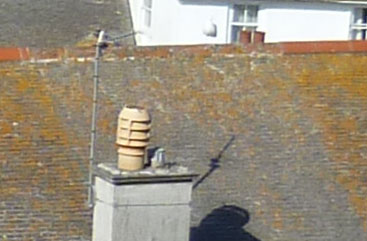 | 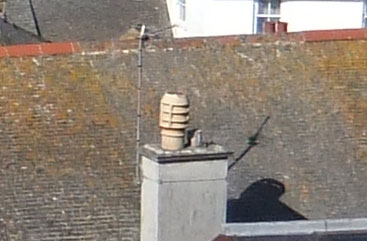 | |
f3.3, 80 ISO |
f6.4, 100 ISO | |
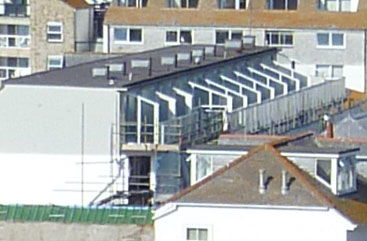 | 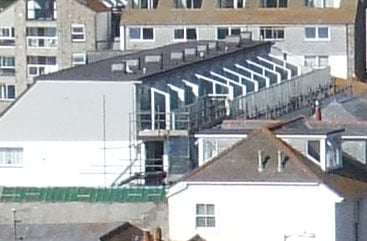 | |
f3.3, 80 ISO |
f6.4, 100 ISO |
Panasonic Lumix DMC-FS30 / FH20 results: Real-life resolution / High ISO Noise
To compare real-life performance we shot this scene with the Panasonic Lumix FS30 / FH20 and the Fujifilm FinePix JZ300 within a few moments of each other using their best quality JPEG settings. The lenses on each camera were set to approximate the same field of view, and the cameras were set to Program mode (a.k.a. Normal Picture mode on the FS30 / FH20) with manual ISO selected – 80 ISO for the Panasonic Lumix FS30 / FH20, 100 ISO on the Fujifilm FinePix JZ300. The above image was taken with the Panasonic Lumix DMC-FS30 / FH20 in normal Picture mode. The lens was set to 5 mm (28mm equivalent) and the metering selected an exposure of 1/1000th of a second at f3.3 at an ISO setting of 80. The original 4320 x 3240 pixel image had a file size of 4.84MB. Overall, we were impressed by the quality of the Lumix FS30 / FH20’s images. The exposure is good, with the histogram just touching either end of the horizontal axis and there’s plenty of detail in the highlights and shadows. It’s hard to fault the automatic white balance and all the colours from the yellow sand on the beach to the greens in the foreground vegetation and the blue sky are nicely rendered and natural looking. Now to the detail in the crops. Here too, the Lumix FS30 / FH20 has turned in an impressive performance. If you were very critical, you might argue that the detail is a little soft, but in terms of what you can reasonably expect from a compact super zoom with a 1/2.3 inch sensor this is well within acceptable limits. The wider the zoom range, the more difficult it becomes to get good results and avoid problems like distortion and lens aberrations, but the crops from different areas of our Lumix FS30 / FH20 test shot are remarkably consistent, with sharpness and contrast holding up from the certre regions to the edge of the frame. We also think Panasonic has done a good job with image processing and compression. There’s no evidence of over sharpening or other processing artifacts and, thankfully, given there’s no choice over compression settings, there’s no evidence of JPEG compression artifacts despite the FS30 / FH20’s 14 Megapixel images being conmpressed down to a manageable 4-5MB file size. If you were hoping that a difference in image quality would help you decide between the Lumix FS30 / FH20 and the Fujifilm FinePix JZ300, you’re going to be disappointed. There really is very little to distinguish these two models in terms of image quality, with the crops from both cameras looking remarkably similar. Because it packs an additional 2 megapixels on its higher resolution sensor, the crops from the Lumix FS30 / FH20 images show a smaller area larger and in more detail, so one clear advantage is that you’ll be able to make larger prints at the same quality as the smaller ones you’ll get from the 12 Megpixel FinePix JZ300. Now let’s check out how they compare at higher sensitivities in our High ISO Noise results. |
Panasonic Lumix DMC-FS30 / FH20 vs Fujifilm FinePix JZ300 High ISO Noise
Panasonic Lumix DMC-FS30 / FH20 results: Real-life resolution / High ISO Noise
Panasonic Lumix DMC-FS30 / FH20 results: Real-life resolution / High ISO Noise
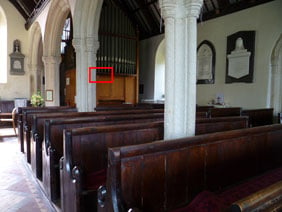 |
|
To compare noise levels under real-life conditions we shot this scene with the the Panasonic Lumix DMC-FS30 / FH20 and the Fujifilm FinePix JZ300
The lenses on both cameras were set to approximate the same field of view and ISO was manually set.
The above shot was taken with the the Panasonic Lumix DMC-FS30 / FH20 in Normal Picture mode with the lens at a wide angle setting of 5mm (28mm). The exposure was 0.8 seconds at f3.3. The crops are taken from the area marked with the red square and presented below at 100%.
These crops from the Panasonic Lumix FS30 / FH20 will be pretty reassuring for anyone who likes to take pictures in low-light conditions without flash. Our central crop is taken from part of the scene that doesn’t get much light (one of the reasons we chose it) and, even when the exposure is correct, it can be difficult to see detail in the shadows, particularly at lower ISO settings and longer exposures. There’s no such problem with the FS30 / FH20 though and in the 80 and 100 ISO crops you can see good detail, but no noise, in the wood panelling and the stone column on the left.
The 200 ISO crop also shows very good detail, there is now some discernable noise, but nothing like enough to warrant worrying about making everyday use of the 200 ISO sensitivity setting. The watershed comes at the 400 ISO setting where it looks like Panasonic has been over-zealous with its noise reduction algorithm. Overall, things are looking a little smeared and blurry and it’s particularly noticeable in the stone column. The colour balance is also starting to wander and look a touch on the green side.
At 800 and 1600 ISO there’s the kind of marked deterioration you’d expect, but in both instances it’s the noise suppression, rather than noise itself which is most noticeable. Whether you prefer this or a less processed, noisy high ISO image is down to personal preference, but it does preclude anyone so inclined from using their own noise reduction techniques using image editing software.
Compared with the Fujifilm FinePix JZ300 we think the Panasonic Lumix FS30 / FH20 makes a better job of handling noise, particularly at the lower end of the ISO sensitivity scale. For one thing, the slowest shutter speed of just 1/4 second in the FinePix JZ300’s Program mode has resulted in the first two shots being under-exposed – the 100 ISO one badly so. This makes it difficult to judge, but we’d say the FS30 / FH20 has a clear advantage up to 200 ISO. Arguably, the 400 ISO setting is the one point at which the Fujifilm crop looks better, beyond that it’s simply a question of which style of image degradation you prefer – smooth or lumpy.
Now head over to our Panasonic FS30 / FH20 gallery to see some more real-life shots in a variety of conditions.
Panasonic Lumix DMC-FS30 / FH200 |
Fujifilm FinePix JZ30 | |
 | ||
80 ISO |
Unavailable | |
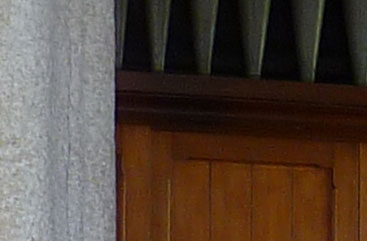 | 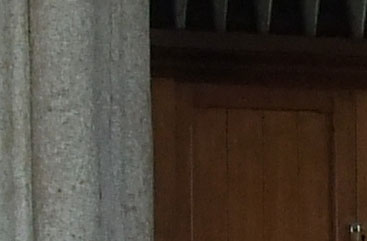 | |
100 ISO |
100 ISO | |
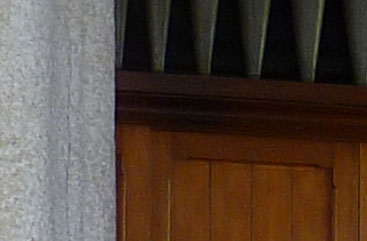 |  | |
200 ISO |
200 ISO | |
 |  | |
400 ISO |
400 ISO | |
 |  | |
800 ISO |
800 ISO | |
 | 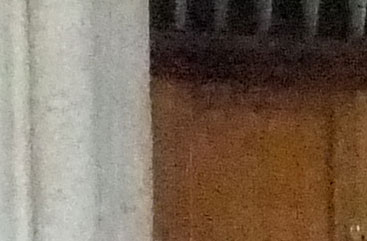 | |
1600 ISO |
1600 ISO | |
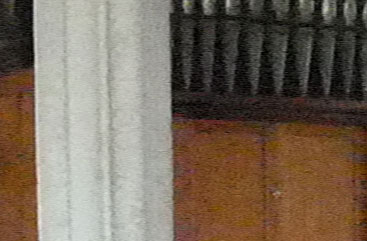 | ||
3200 ISO Not manually available |
3200 ISO (3 Megapixels) |
